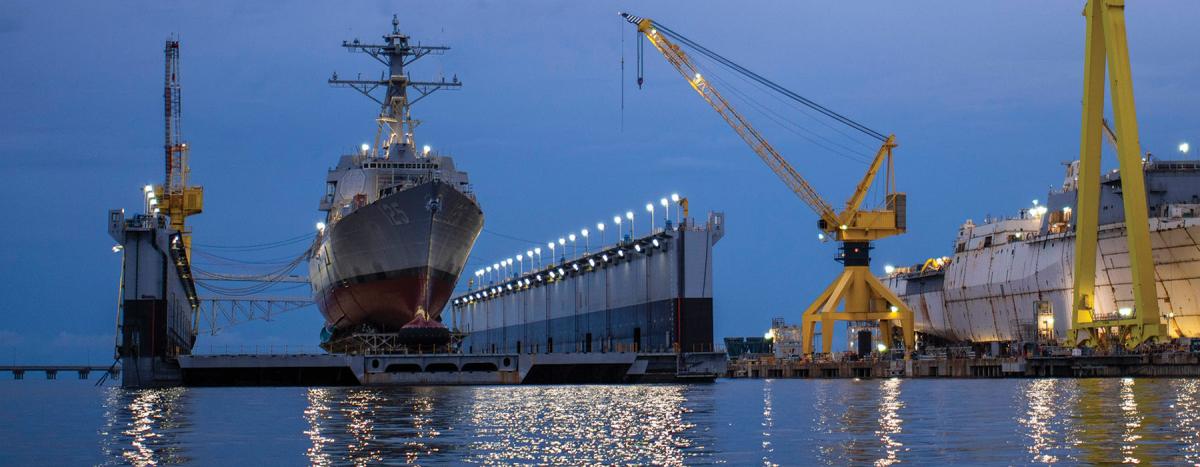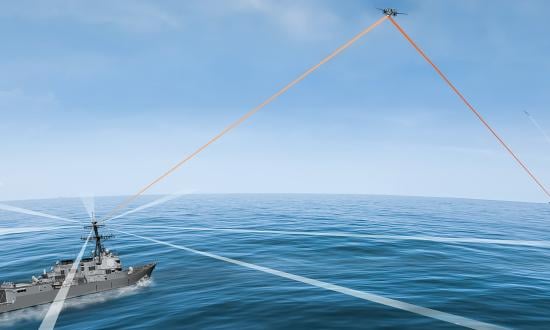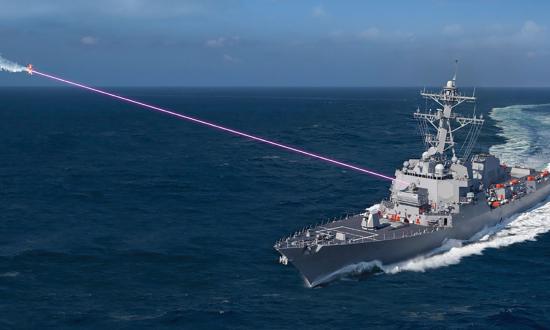Lockheed Martin Mission and Rotary Systems is working with shipbuilder Huntington Ingalls Industries to prepare for initial lightoff of the Aegis combat system on board the Arleigh Burke–class guided-missile destroyer Jack H. Lucas (DDG-125) late this year. Huntington is building the ship—the first of the Flight III ships—in Pascagoula, Mississippi.
Lockheed Martin is the longtime builder of the Aegis weapon system for the DDGs and the Ticonderoga-class guided-missile cruisers and acts as the Navy’s Aegis combat systems engineering agent. The system software going on board the nearly bow-to-stern redesigned Flight III ships is designated Baseline 10 and will control the ship’s full suite of weapon systems, including the new SPY-6 air-and-missile-defense radar, which is built by Raytheon.
Jim Sheridan, general manager of Lockheed Martin’s Aegis site in Moorestown, New Jersey, says the two companies are working on integration of the Baseline 10 with the SPY-6. The system has gone through testing at the Navy’s Combat Systems Engineering Development Site near the Moorestown facility.
Sheridan says the company debuted its Virtualized Aegis Weapon System (VAWS) during Indo-Pacific Command’s (IndoPaCom’s) huge Valiant Shield exercise in September 2020. The VAWS, packed in a compact housing that he calls a “dormitory refrigerator,” provided targeting data for Army and Air Force operations centers in Hawaii and Guam to demonstrate weapons launches against hostile targets. He says the company has been working closely with IndoPaCom to demonstrate “the evolution of joint domain operations, linking together of offensive and defensive fires capability.”
Lockheed Martin also demonstrated the VAWS at the Air Force’s Northern Eagle exercise, held in Alaska in May 2021, and during the Australian-run Talisman Shield between June and August.
Sheridan says Aegis virtualization makes it possible to distribute the power of Aegis in multiple compact nodes, available throughout air, land, and naval domains—potentially without the need for an Aegis-equipped ship.
The company is pursuing initiatives to dramatically speed up the fielding of combat systems upgrades to the fleet. The goal, Sheridan says, is to shatter the paradigm of taking years to introduce improvements using “digital transformation” and, the Navy hopes, get upgrades to ships in as little as 24 hours.
To pursue Navy digital transformation, the Program Executive Office for Integrated Warfare stood up a facility called the Forge in College Park, Maryland, to create a Navy version of DoD’s Development, Security, Operations (DevSecOps) mandate to ensure cybersecurity for software development. (See “The Navy Gets a Software Factory,” August 2021).
“All this is about getting capability to the warfighter faster and not have to wait four-plus years to deliver a baseline,” Sheridan says.
Lockheed Martin has partnered with SOLUTE Inc. to enhance security for Aegis software and Innovative Defense Technologies to create an Aegis Enterprise platform as a service to deliver updates to test sites digitally. The company also is teamed with Amazon Web Services for a range of cloud-based data-engineering tasks.
The Missile Defense Agency is funding work on the Baseline 5.4 ballistic-missile defense program now in the fleet. Lockheed Martin is developing a low-noise amplifier that will enable future software upgrades to older SPY radars on early Flight I and II DDGs.
Lockheed Martin’s radar efforts are not limited to the U.S. Navy. The company is building its new SPY-7 Aegis phased-array radar, the successor to the legacy SPY-3, for Spain’s F-110 frigate program and Canada’s new surface combatant. Japan’s Ministry of Defense is considering installing it on an “Aegis system equipped vessel,” as an alternative to the Aegis Ashore systems canceled in 2020.






